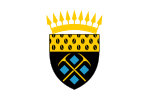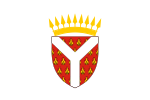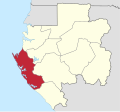
 |
|---|
Gabon is divided into nine provinces, which are further divided into 49 departments.

 |
|---|
Gabon is divided into nine provinces, which are further divided into 49 departments.
| Flag | Map | Province | Capital | Population (2013) [1] | Area (km2) [1] |
|---|---|---|---|---|---|
 |  | Estuaire | Akanda | 895,689 | 20,740 |
 |  | Haut-Ogooué | Franceville | 250,799 | 36,547 |
 |  | Moyen-Ogooué | Lambaréné | 69,287 | 18,535 |
 |  | Ngounié | Mouila | 100,838 | 37,750 |
 |  | Nyanga | Tchibanga | 52,854 | 21,285 |
 |  | Ogooué-Ivindo | Makokou | 63,293 | 46,075 |
 |  | Ogooué-Lolo | Koulamoutou | 65,771 | 25,380 |
 |  | Ogooué-Maritime | Port-Gentil | 157,562 | 22,890 |
 |  | Woleu-Ntem | Oyem | 154,986 | 38,465 |